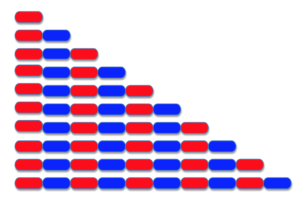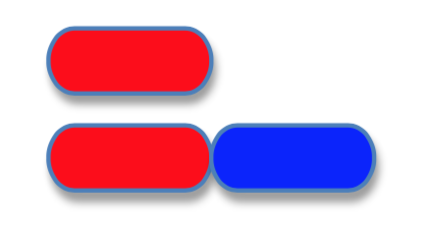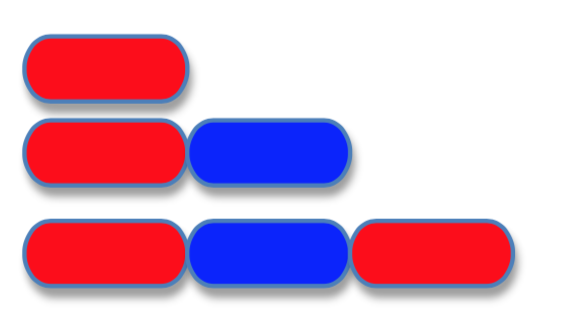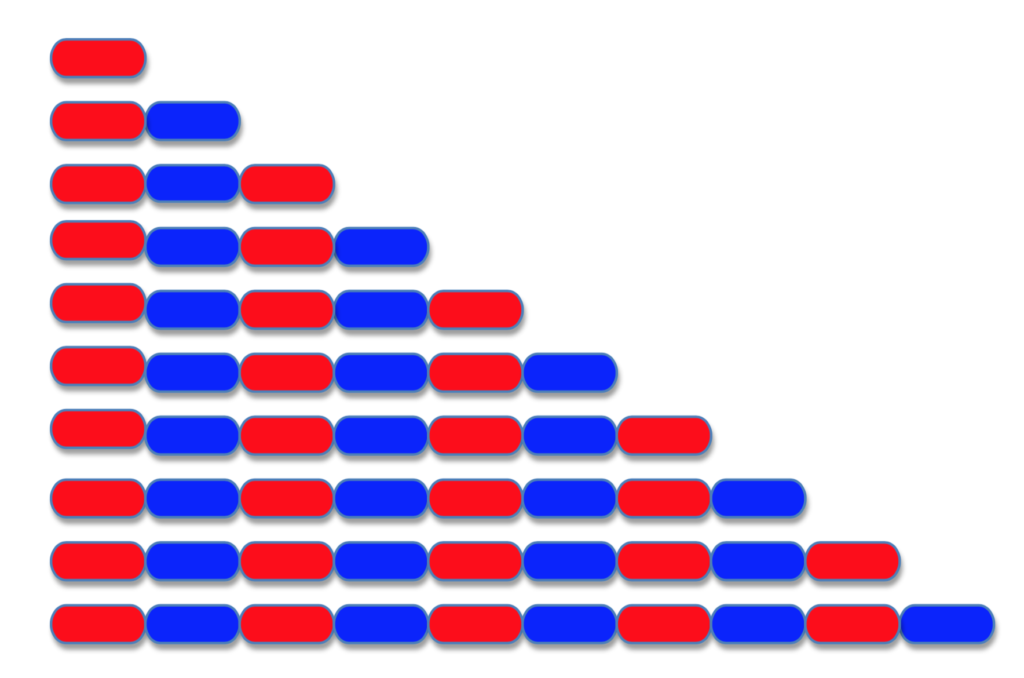
“It’s not fair. He has more than I do.”
Bryan and Dana had started out with identical candy canes. Dana’s had dropped and broken into three pieces. There was no convincing her that Bryan had the same amount as she did.
She wanted the long peppermint stick. It was more. Bryan, then six-years-old, traded his one long stick for the three short pieces. Peace again ruled the day.
Research shows that pre-school children perceive the length of objects to be the indicator of quantity, instead of the actual number of objects.
Children were asked to say which of three vases contained the most number of flowers. One vase had three flowers. Another vase had five flowers. The third vase had two flowers about three inches taller than the flowers in the other vases. The children chose the vase with the two tall flowers as having the most flowers.
After working with young children for many years, I’ve observed this phenomenon of children perceiving length to indicate quantity.
This perception explains the tears behind a broken peppermint stick, as children see the short pieces of a broken candy cane as being of less value than an equal unbroken piece of candy.
This perception of length for quantity can make it difficult for some children to grasp the concept of quantity.
This exercise, Number Trains, can be put together with jumbo colored craft sticks. It can help your three-year-old or older child with the concept of quantity while using their innate perception of length for quantity.
Number Trains
Materials Needed
- 55 jumbo craft sticks in red and blue (30 red color, 25 blue)
- Two containers for sticks
Place the 30 red sticks in one container, the blue ones in the other.
Take one red stick out, and place it horizontally in front of the child. Say to the child, “One. This is one stick.”
Diagram:

Take out a red stick, and place it directly underneath the first red stick. To the right place a blue stick. Place your index finger on the red stick and say “One.” Then place your index finger on the blue stick and say “Two. Here are two sticks.”
Diagram:

Take out a red stick, and place it directly under the first two red sticks. Add a blue stick and then another red one. Place your index finder on the first red one and say “One”. Then place index finger on blue and say “Two.” Then place your index finger on the third and red stick and say, “Three. Here are three sticks.”
Diagram:

Return the sticks back into the container and say to the child, “Now it’s your turn to build one, two and three.”
After the child can build these three “number trains” independently, which may be anywhere from one day to many days, introduce four, five and six, in the same manner as you introduced one, two and three. Introduce quantities to ten as your child independently builds the number trains, one by one, length by length.


2 Responses to “Truth in Numbers: Count to Ten”